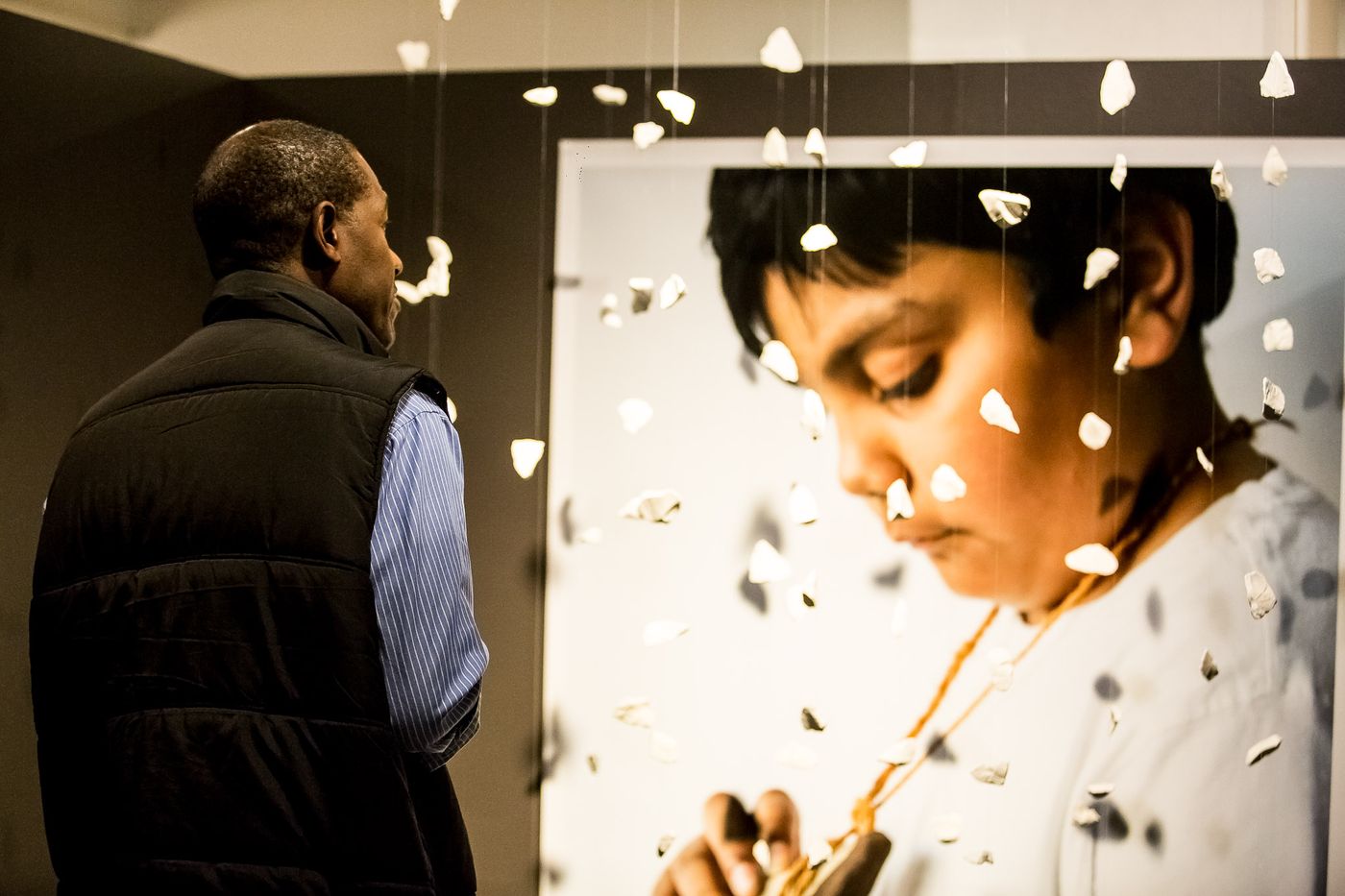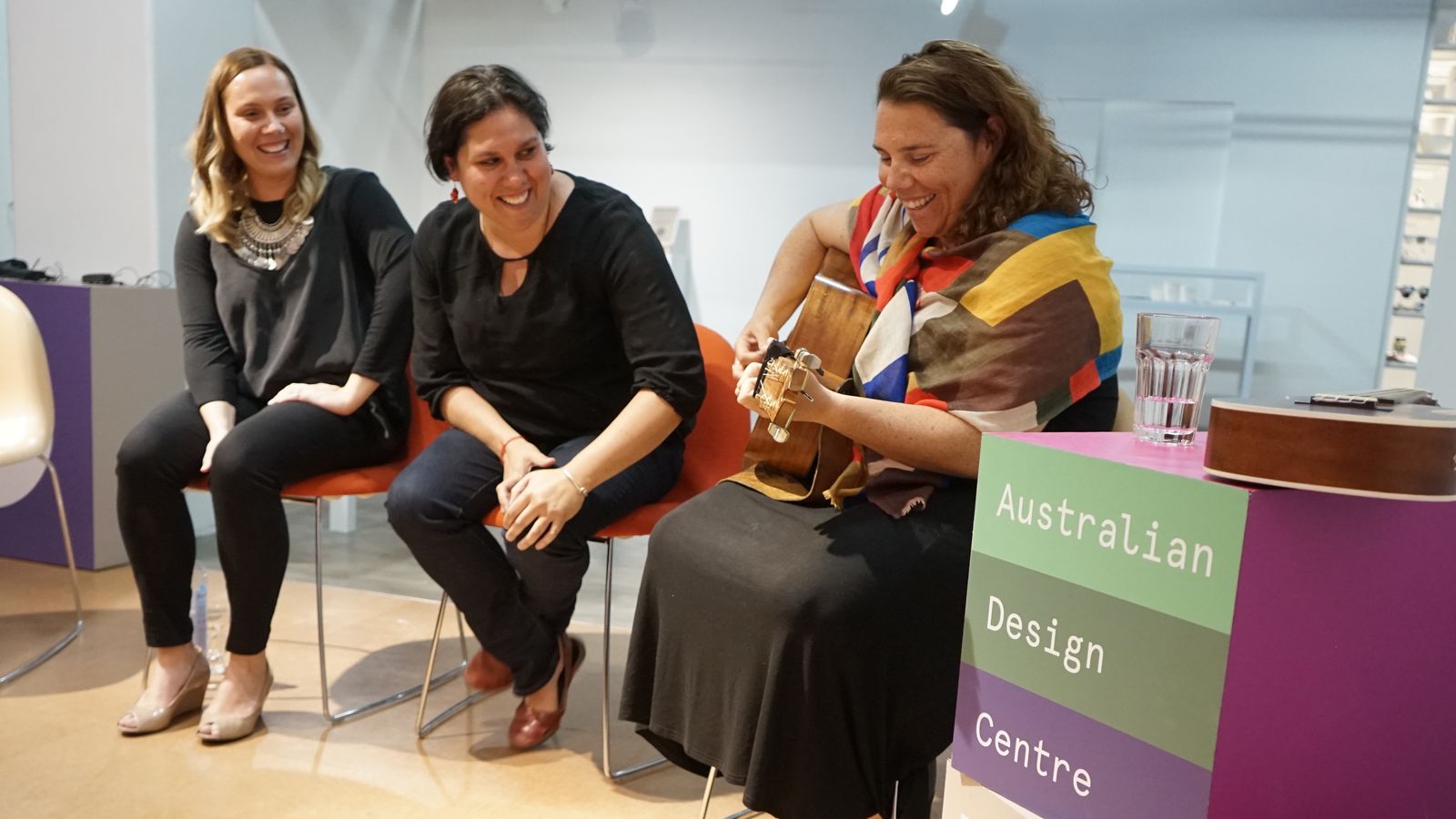Artist and designer Lucy Simpson has been making for a long time. Before she even knew to call it design Lucy was drawing, dyeing fabrics and threading necklaces with echidna quills collected up on Yuwaalaraay country around Walgett and Lightning Ridge. She shared hosted a a very special evening at the Australian Design Centre on Tuesday 11 October.
Lucy Simpson has been making for a long time. Before she even knew to call it design and well before she graduated from UNSW with a Bachelor of Design, Lucy was drawing and dyeing fabrics and threading necklaces with echidna quills collected up on Yuwaalaraay country around Walgett and Lightning Ridge.
These insights - into Lucy’s design practice, her interest in the value of cultural materials and objects, her deep connections to country and into her understanding of Indigenous design principles and practice - were shared as part of a very special evening at the Australian Design Centre on Tuesday 11 October.
Opening the evening with a guided walk through her exhibition, Dhuwi, which translates loosely to mean ‘spirit’ in Yuwaalaraay language, Lucy talked about the significance of each work and its development - both as a finished object but also as an expression of her experiences, questions and connections to country. Dhuwi is her attempt to understand and articulate the ways in which cultural objects and materials come embedded with the spirit and history of the country from which they’ve come.
It was fascinating to hear about the impact of her visits to the anthropological collections of the British Museum in London and the Peabody Museum at Harvard in the US and to have an insight into the way she has designed these works to be experienced and received, and to subtly challenge and subvert our expectations of them as objects.
For instance, in Yilaalu Cont’ - she has taken her early experiences making echidna quill necklaces and reimagined the quills as oversized earthenware objects - sculptural and beautiful and low to the ground - and completely unable to be worn or seen as decoration. What new insights or experiences do we then have with them in this different form?
Following Lucy’s tour of Dhuwi she was joined by her sisters for a panel discussion moderated by curator Emily McDaniels, who worked with Lucy to develop Dhuwi. It was clear to everyone in the room that a) this was not going to be any ordinary panel discussion and that b) this was no ordinary family!
Nardi Simpson is a singer songwriter and one half of the highly acclaimed band The Stiff Gins and Jilda Andrews is a PhD student at ANU who works at the National Museum of Australia in Canberra. Together they sing as Billir, celebrating their traditional Yuwaalaraay and Gamilaroi languages and have also travelled and worked together.
Jilda, Nardi and Lucy travelled together to the US earlier this year and spent time with the collections of the Peabody and Smithsonian; Jilda researching the ways in which overseas museums care for and display anthropological collections, and in particular, Indigenous objects and remains.
All three women were profoundly affected by the trip and it was fascinating, moving and inspiring to hear them talk about their cultural and spiritual connections to these objects and the ways they have each responded to the experience – Lucy with Dhuwi, Nardi with The Spirit of Things, her recent performance piece with Kaleena Briggs at Performance Space and Carriageworks, and Jilda, with her ongoing research towards her PhD.
Nardi, Jilda and Lucy all spoke about these objects and materials and the ways in which they hold a sense of the country they’ve come from, even despite being stored in the basements of these major international collections. For each of them, the intellectual and creative challenge is finding ways to cooperatively and collaboratively make these objects more available to the elders and cultural custodians back here in Australia, especially if their repatriation is not immediately possible.
The Simpson sisters rounded out the evening with a performance of several songs in Yuwaalaraay and Gamilaroi language that left everyone in the audience spellbound. A guest appearance by Nardi’s son Luke – and the ‘star’ of Lucy’s work Necklace for a Boy was one highlight among many.
The entire evening was a huge privilege and we thank Lucy, Jilda and Nardi for their time, insights and talents and Emily McDaniel for her thoughtful moderation of the evening.
Lucy Simpson's Dhuwi in the exhibition Indigenous Design: Nicole Monks and Lucy Simpson on display until 23 November 2016.
Read more about Lucy Simpson and see photos from the exhibition here
Images:
Lucy Simpson, Jilda Andrews and Nardi Simpsons perform, 11 October 2016. Photo: ADC
Installation photos from opening night of Lucy Simpson, Necklace for a Boy, 2016 (photo by Chris Chen). Image credit: Boaz Nothman

Lucy Simpsons, Necklace for a boy, 2016. Photo by Boaz Nothman.

